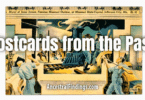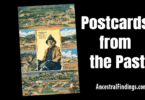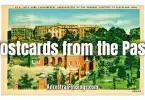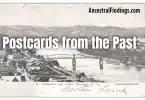I found this old postcard the other day, and something about it pulled me right in. It shows a dimly lit room, heavy with shadow and curiosity. There’s a man standing with a bird—maybe a parrot—perched on his arm. A woman leans against the back bar. You can just make out a bartender. There’s a large wooden chest in the corner, chains hanging from the wall, and rough-hewn beams that look like they’ve seen more than a century of stories.
This isn’t just a bar. It’s something else. It feels like a set from a play, or maybe a place where the curtain never fully drops. That’s when I knew—I was looking at a piece of history from New York’s old Pirate’s Den.
The Strange Genius Behind It All
The Pirate’s Den wasn’t just a theme restaurant. It was a product of one man’s wild imagination. Don Dickerman, born in Illinois in 1893, studied art and came to New York to dive into the bohemian world of Greenwich Village. He was known for dressing the part of a pirate—gold hoop earrings, flowing blouse, and all. He once bragged about having 13 marriages, just one more than Blackbeard.
Before the Pirate’s Den, he opened a short-lived spot called the Pirate’s Cave in 1916 at 133 Washington Place, which mainly served as a gallery for his hand-painted pirate toys. That cave, lit only by candlelight, had a real coffin at the entrance and a so-called Dead Man’s Chest you could open to reveal a ladder down to who-knows-where.
But the building changed hands, and after a legal dispute, Dickerman moved on. That’s when he opened the Pirate’s Den at 8 Christopher Street in 1917. That’s the place we’re looking at in this postcard.
Inside the Pirate’s Den
The Pirate’s Den was a three-level, pirate ship-themed restaurant built inside an old 1849 stable. Each floor was its own “deck”—the Main Deck, Gun Deck, and Hurricane Deck. Diners sat at tables with treasure map tablecloths, ordered from menus presented with a side of pirate law, and were served by waiters dressed in full buccaneer regalia. Swords in belts, gold earrings, and often, eye patches.
The orchestra played from a moving freight elevator, gliding between floors to provide music. And there was even a resident bird—an old Panamanian macaw named Robert who was famous for cursing at the guests.
A typical night at the Den was full of oddity and entertainment. Waiters were often artists or poets by day. One was quoted saying they planned to train a parrot to say “Pieces of eight!” Others simply recited verse.
Wild Nights and Stranger Days
New York loved the place. Mayor John Hylan even spent Thanksgiving there. But not everyone approved. Some called it a nuisance, a “plague spot” in the Village. There were police raids—once in 1921 for running without a dance license, and again in 1923 when staff were caught carrying swords and pistols. The headlines read like something out of a pulp novel: Pirates Disarmed in Village Lair.
What’s even more wild? Dickerman never served alcohol, not even during Prohibition. The toughest drink on the menu was a root beer.
A Sudden End
Tragedy struck in 1929. A fire gutted the Pirate’s Den, killing Dickerman’s birds and destroying irreplaceable memorabilia. The crash of the stock market came shortly after, and Dickerman filed for bankruptcy in 1932. He listed only a few old suits as his remaining possessions.
The building was eventually torn down. In its place now stands the popular gay bar, Pieces. But look closely, and maybe you’ll still feel it—the creak of the wooden decks, the sway of the rigging, the soft squawk of Robert cursing in the corner.
What the Postcard Remembers
The postcard isn’t just a snapshot of a themed restaurant. It captures a moment in time when imagination ran wild, when artists and eccentrics turned old stables into fantasy worlds. You can see it in the pose of the man holding the bird, in the look of the woman near the bar, in the shadows that fall across the ceiling beams.
And as I hold it now, I wonder what stories this place still keeps.
If you’ve got a postcard like this—one that tells its own story—I’d love to see it. Reach out through the Contact link, and I’ll be glad to share in the history. There’s always another tale waiting to be found.






